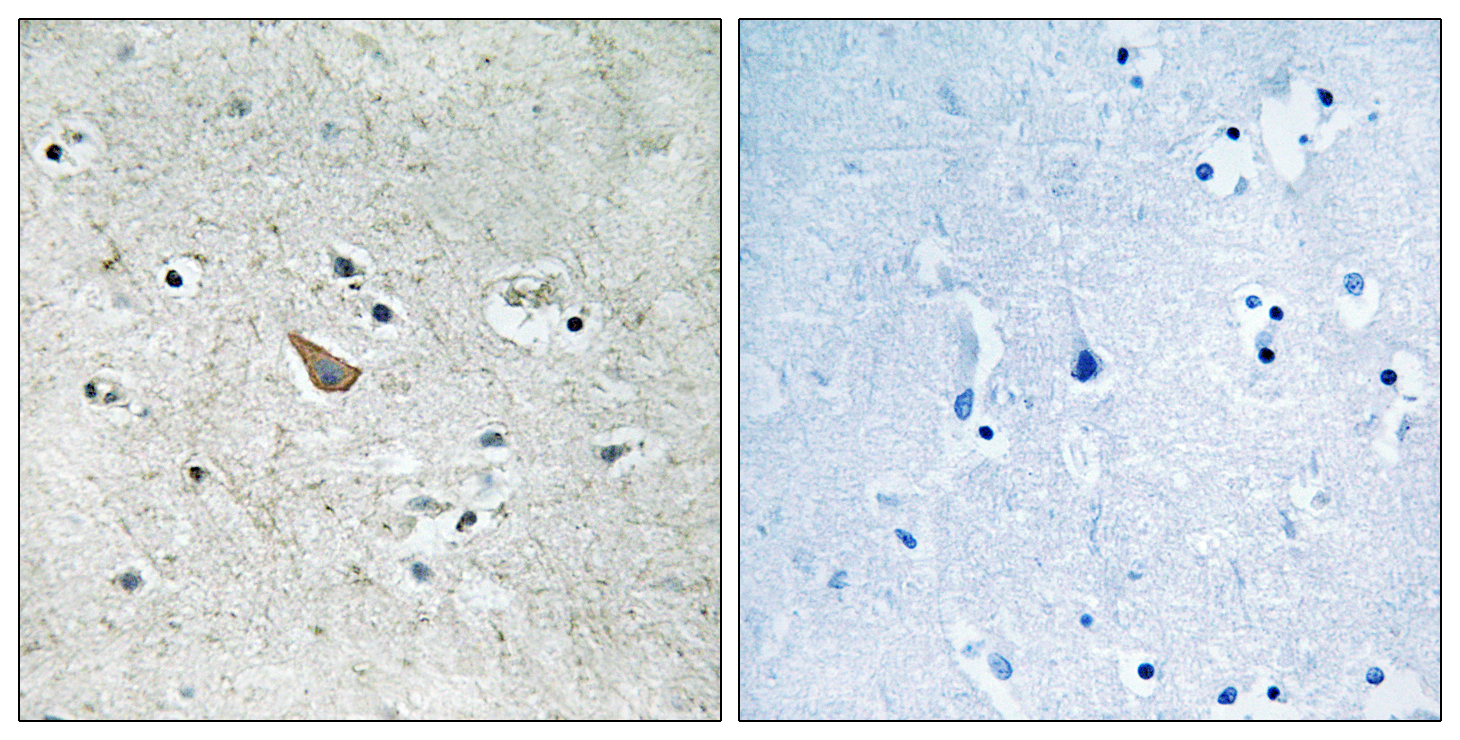Ephrin-B1/2 (phospho Tyr329) Polyclonal Antibody
- Catalog No.:YP1066
- Applications:IHC;IF;ELISA
- Reactivity:Human;Mouse;Rat
- Target:
- Ephrin-B1/2
- Fields:
- >>Axon guidance
- Gene Name:
- EFNB1/EFNB2
- Protein Name:
- Ephrin-B1/2
- Human Gene Id:
- 1947/1948
- Human Swiss Prot No:
- P98172/P52799
- Mouse Gene Id:
- 13641/13642
- Rat Swiss Prot No:
- P52796
- Immunogen:
- The antiserum was produced against synthesized peptide derived from human Ephrin B1/B2 around the phosphorylation site of Tyr329. AA range:295-344
- Specificity:
- Phospho-Ephrin-B1/2 (Y329) Polyclonal Antibody detects endogenous levels of Ephrin-B1/2 protein only when phosphorylated at Y329.
- Formulation:
- Liquid in PBS containing 50% glycerol, 0.5% BSA and 0.02% sodium azide.
- Source:
- Polyclonal, Rabbit,IgG
- Dilution:
- IHC 1:100 - 1:300. ELISA: 1:10000.. IF 1:50-200
- Purification:
- The antibody was affinity-purified from rabbit antiserum by affinity-chromatography using epitope-specific immunogen.
- Concentration:
- 1 mg/ml
- Storage Stability:
- -15°C to -25°C/1 year(Do not lower than -25°C)
- Other Name:
- EFNB1;EFL3;EPLG2;LERK2;Ephrin-B1;EFL-3;ELK ligand;ELK-L;EPH-related receptor tyrosine kinase ligand 2;LERK-2;EFNB2;EPLG5;HTKL;LERK5;Ephrin-B2;EPH-related receptor tyrosine kinase ligand 5;LERK-5;HTK ligand;HTK-L
- Molecular Weight(Da):
- 37kD
- Background:
- The protein encoded by this gene is a type I membrane protein and a ligand of Eph-related receptor tyrosine kinases. It may play a role in cell adhesion and function in the development or maintenance of the nervous system. [provided by RefSeq, Jul 2008],
- Function:
- disease:Defects in EFNB1 are a cause of craniofrontonasal syndrome (CFNS) [MIM:304110]; also known as craniofrontonasal dysplasia (CFND). CFNS is an X-linked inherited syndrome characterized by hypertelorism, coronal synostosis with brachycephaly, downslanting palpebral fissures, clefting of the nasal tip, joint anomalies, longitudinally grooved fingernails and other digital anomalies.,function:Binds to the receptor tyrosine kinases EPHB1 and EPHA1. Binds to, and induce the collapse of, commissural axons/growth cones in vitro. May play a role in constraining the orientation of longitudinally projecting axons.,induction:By TNF-alpha.,PTM:Inducible phosphorylation of tyrosine residues in the cytoplasmic domain.,similarity:Belongs to the ephrin family.,subunit:Interacts with GRIP1 and GRIP2.,tissue specificity:Heart, placenta, lung, liver, skeletal muscle, kidney, pancreas.,
- Subcellular Location:
- Cell membrane ; Single-pass type I membrane protein . Membrane raft . May recruit GRIP1 and GRIP2 to membrane raft domains. .; [Ephrin-B1 C-terminal fragment]: Cell membrane ; Single-pass type I membrane protein .; [Ephrin-B1 intracellular domain]: Nucleus . Colocalizes with ZHX2 in the nucleus. .
- Expression:
- Widely expressed (PubMed:8070404, PubMed:7973638). Detected in both neuronal and non-neuronal tissues (PubMed:8070404, PubMed:7973638). Seems to have particularly strong expression in retina, sciatic nerve, heart and spinal cord (PubMed:7973638).
- June 19-2018
- WESTERN IMMUNOBLOTTING PROTOCOL
- June 19-2018
- IMMUNOHISTOCHEMISTRY-PARAFFIN PROTOCOL
- June 19-2018
- IMMUNOFLUORESCENCE PROTOCOL
- September 08-2020
- FLOW-CYTOMEYRT-PROTOCOL
- May 20-2022
- Cell-Based ELISA│解您多样本WB检测之困扰
- July 13-2018
- CELL-BASED-ELISA-PROTOCOL-FOR-ACETYL-PROTEIN
- July 13-2018
- CELL-BASED-ELISA-PROTOCOL-FOR-PHOSPHO-PROTEIN
- July 13-2018
- Antibody-FAQs
- Products Images

- Enzyme-Linked Immunosorbent Assay (Phospho-ELISA) for Immunogen Phosphopeptide (Phospho-left) and Non-Phosphopeptide (Phospho-right), using Ephrin B1/B2 (Phospho-Tyr329) Antibody

- Immunohistochemistry analysis of paraffin-embedded human brain, using Ephrin B1/B2 (Phospho-Tyr329) Antibody. The picture on the right is blocked with the phospho peptide.



